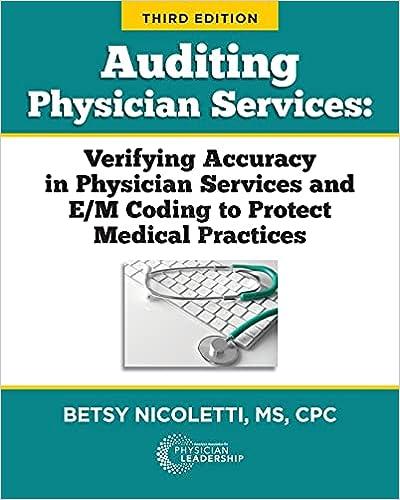39. The profitability index is computed by dividing the A) initial investment by the total cash flows B) total cash flows by the initial investment. C) initia D) present value of cash flows by the initial investment. l investment by the present value of cash flows. using that the direet materials used is $1,400,000, compute the total manufacturing costs using the following information. Raw materials inventory, January 1 Raw materials inventory, December 31 Work in process, January 1 Work in process, December 31 Finished goods, January I Finished goods, December 31 Raw materials purchases Direct labor Factory utilities Indirect labor s 20,000 40,000 18,000 12,000 40,000 32,000 1-400,000 560,000 150,000 50,000 400,000 420,000 Factory depreciation Operating expenses A) $2,360,000. B) $2,560,000. C) $2,980,000. D) $2,554,000. 41 Dunbar Manufacturing's variable costs are 30% of sales. The company is contermplating an advertising campaign that will cost $44,000. If sales are expected to increase $80,000, by how much will the company's net income increase? A) $36,000 B) $56,000 C) $12,000 D) $24,000 42. Molina Company has beginning and ending work in process inventories of $130,000 and $145,000 respectively. If total manufacturing costs are $650,000, what is the total cost of goods manufactured? A) S665,000. B) $780,000 C) $795,000 D) $635,000 43. A disadvantage of the cash pay A) ignores the time value of money. B) ignores obsolescence factors. C) ignores the cost of an investment. D) is complicated to use. back technique is that it 44. Which of the following is an irrelevant cost? A) An opportunity cost B) An incremental cost C) A sunk cost D) An avoidable cost company uses 8,400 pounds of materials and exceeds the standard by 300 pounds The quantity variance is $1,800 unfavorable. What is the standard price? A) S2 B) $4 C) Cannot be determined from the data provided. D) S6 45. A 46. The per-unit standards for direct labor are 2 direct labor hours at $15 per hour. If in producing 1,800 units, the actual direct labor cost was $48,000 for 3,000 direct labor hours worked, the total direct labor variance is A) $6,000 unfavorable. B) $1,800 unfavorable. C) $6,000 favorable. D) $3,750 unfavorable. 47. The degree of operating leverage A) cannot be used to compare companies. B) measures how much of each sales dollar is available to cover fixed expenses. C) does not provide a reliable measure of a company's earnings volatility. D) is computed by dividing total contribution margin by net income. 48. LKN Company had net credit sales of $4,290,000 and cost of goods sold of $3,000,000 for the year. The Accounts Receivable balances at the beginning and end of the year were $600,000 and $700,000, respectively. The accounts receivable turnover ratio was A) 7.2 times. B) 6.1 times. C) 3.3 times. D) 6.6 times. 43. A disad vantage of the cash payback technique is that it A) ignores the time value of money. B) ignores obsolescence factors. C) ignores the cost of an investment. D) is complicated to use. 44. Which of the following is an irrelevant cost? A) An opportunity cost B) An incremental cost C) A sunk cost D) An avoidable cost company uses 8,400 pounds of materials and exceeds the standard by 300 pounds The quantity variance is $1,800 unfavorable. What is the standard price? A) S2 B) $4 C) Cannot be determined from the data provided. D) S6 45. A 46. The per-unit standards for direct labor are 2 direct labor hours at $15 per hour. If in producing 1,800 units, the actual direct labor cost was $48,000 for 3,000 direct labor hours worked, the total direct labor variance is A) $6,000 unfavorable. B) $1,800 unfavorable. C) $6,000 favorable. D) $3,750 unfavorable. 47. The degree of operating leverage A) cannot be used to compare companies. B) measures how much of each sales dollar is available to cover fixed expenses. C) does not provide a reliable measure of a company's earnings volatility. D) is computed by dividing total contribution margin by net income. 48. LKN Company had net credit sales of $4,290,000 and cost of goods sold of $3,000,000 for the year. The Accounts Receivable balances at the beginning and end of the year were $600,000 and $700,000, respectively. The accounts receivable turnover ratio was A) 7.2 times. B) 6.1 times. C) 3.3 times. D) 6.6 times. 49. If Year 1 equals $700, Year 2 equals $310, and Year 3 equals $650, the percentage to l assigned for Year 1 in a trend analvsis, assuming that Year 1 is the base year, is A) 100%. B) 105%. C)8996. D) 112%. 50. In using the high-low method, the fixed cost A) may be determined by subtracting the total variable cost from either the total cost the low or high activity level. B) is determined by subtracting the total cost at the high level of activity from the to cost at the low activity level. C) is determined by adding the total variable cost to the total cost at the low activity level. D) is determined before the total variable cost. A) standards are excluded from the cost accounting system, whereas budgets are generally incorporated into the cost accounting system. 51. The difference between a budget and a standard is that B) a budget expresses a total amount, while a standard expresses a unit amount. C) a budget expresses what costs were, while a standard expresses what costs sho be. a budget expresses management's plans, while a standard reflects what actuall D) happened. 52. If a firm increases its activity level, A) costs should remain the same. B) some costs will change, others will remain the same. C) no costs will remain the same. D) most costs will rise










